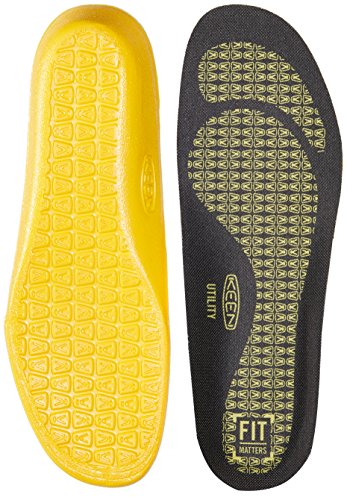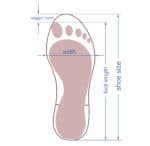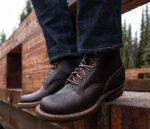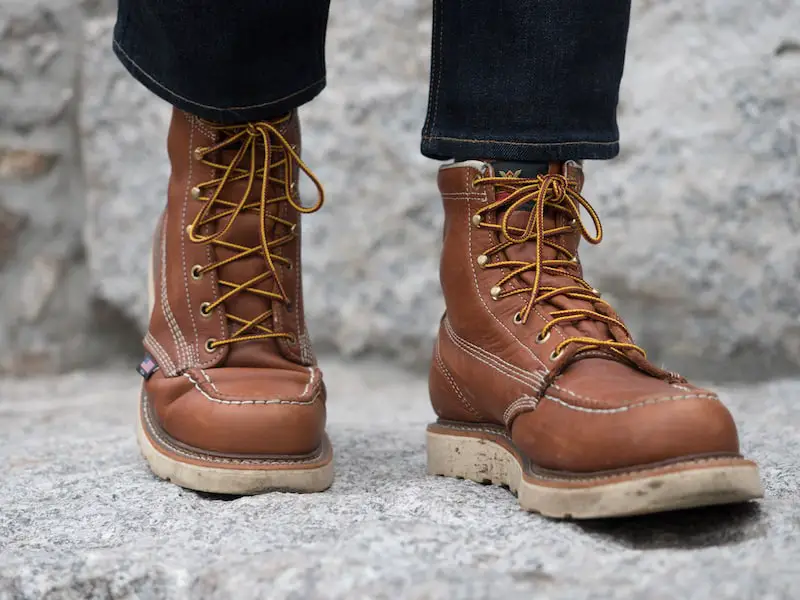If you think about how much your feet must go through on a typical workday, it’s probably amazing that they don’t go on strike more often. Nonetheless, many professionals involved in heavy labor also depend on their feet to do the job at hand.
Despite all your research and effort to find the best pair of work boots and the best pair of socks for work boots, you still may require a bit more help when it comes to protecting your feet.
So, as opposed to automatically deciding you may need a new pair of work boots when foot pain rears its ugly head, consider new cushioned insoles for your work boots. You’ll save quite a bit of money as well.
Insoles are incredibly important when it comes to protecting the specific points of your feet that are the most painful. Of course, they need to be the correct fit for your foot to be efficacious.
We have compiled a list of our favorite cushioned insoles for work boots, and we enjoyed testing these insoles. Our feet never felt so spoiled. So, hopefully, somewhere on this list you’ll find the best-cushioned insoles for your work boot needs.

Our overall top pick is the Keen K-20 Utility Cushion Work Boot Insole. These insoles got the nod because they resist harsh conditions and are quite thick for increased shock absorption on hard surfaces like concrete.
Another great option is the Timberland PRO Work Boot Replacement Men’s Insole made with antifatigue technology.
| Insole | Material | Can Be Customized | Medical | Plus |
|---|---|---|---|---|
| Keen K-20 Utility | Synthetic | Can be trimmed | – | Anti-odor |
| WalkHero Comfort | EVA, Ethylene Vinyl Acetate | No | Plantar fasciitis, Flat feet, High arch, Foot pain | – |
| Timberland PRO | Ortholite synthetic | Yes, can be trimmed | – | Anti-fatigue, Shock absorption, Energy return |
Our List of Insoles that are the Best Cushioned for Work Boots
Best Overall Cushioned Insoles for Work Boots
1.) Keen K-20 Utility Cushion Work Boot Insole
- CUSHIONING & FIT: A premium, thick, full length shock absorbing material evenly cushions the entire foot without compression; High rebound foam provides energy return for all day comfort
- HEEL STABILITY: A heel cup centers and aligns the heel and foot, improving alignment from heel strike, through the arch and toe-off for better stability throughout each gait; Medium arch support to center the body’s alignment
Prices pulled from the Amazon Product Advertising API on:
Product prices and availability are accurate as of the date/time indicated and are subject to change. Any price and availability information displayed on [relevant Amazon Site(s), as applicable] at the time of purchase will apply to the purchase of this product.
These insoles are affordable and provide lots of extra comfort for sore, tired, or aching feet. These insoles are not specifically designed to support arches but do give added support to the sides.
They are produced in a synthetic blend so that they resist harsh conditions and are quite thick for increased shock absorption on hard surfaces like concrete.
They also provide nice cushioning if you run or jump. Designed for Keen work boots, they can be used with any quality pair of work boots. The thickness, however, may not lend itself to being inserted over old insoles as boots may end up being tight.
Pros
-
-
- Synthetic for resistance and durability
- Full foot shock absorbency
- High rebound foam
- The heel cup cradles the heel
- Medium arch support
- Natural pro-biotic technology against odor
- Can be trimmed
-
Cons
-
-
- May affect safety ratings for work boots
- Pricey
- Arch support insignificant if necessary
-
Best Cushioned Insoles for Medical Condition Support in Work Boots
2.) WalkHero Comfort Insoles for Work Boots
- ★DEEP HEEL CUP- to maintain correct foot positioning.protects your heel during the heavy impact of landing during walking or running and stabilizes the foot.
- ★PREMIUM EVA MATERIAL - It is excellent for shock absorption and pain relief. The fabric also helps keep your feel cool
- ★DESIGNED FOR EVERYDAY USE - Provides moderate control and support in walking or casual hiking shoes, work shoes and boots.Comfort and cushioning for all types of leisure or everyday footwear
Prices pulled from the Amazon Product Advertising API on:
Product prices and availability are accurate as of the date/time indicated and are subject to change. Any price and availability information displayed on [relevant Amazon Site(s), as applicable] at the time of purchase will apply to the purchase of this product.
These insoles in particular are designed to correct overpronation from having flat feet or even high arches. They feature upgraded arch support and a deep cup for your heel to sit comfortably in to align feet during movement.
They are exceptionally good with medical conditions like Achilles tendonitis, plantar fasciitis, and pain in the ball of the foot from pressure.
Because they are somewhat thinner, they may work well for those that prefer to leave old insoles in place. Made in premium quality EVA material for lots of shock absorption on hard surfaces. They are sold in a great variety of sizes and three color options.
Pros
-
-
- Ethylene Vinyl Acetate
- Great shock absorption
- Durability up to two years
- Good with medical conditions like flat feet
- Lots of sizes and 3 colors
-
Cons
-
-
- Arch support is s bit rigid, so they made need some breaking in.
- Some chemical smell reported
-
Best Anti-Fatigue Cushioned Insoles in Work Boots
3.) Timberland PRO Work Boot Replacement Men’s Insole
- KEEP IT COMFORTABLE: Timberland PRO insoles offer a carefully engineered upgrade in performance & comfort. The Anti-Fatigue Technology Insole features our exclusive inverted cone foam, designed to absorb shock & return energy to your feet with every step.
- ANTI-FATIGUE TECHNOLOGY: A comfort system designed with shock-absorbing, geometrical technology that returns energy back to the foot to deliver all-day support & comfort. Stay comfortable on your feet all day with Timberland PROs anti-fatigue technology.
- QUALITY WORKWEAR: Timberland PRO assesses the unmet needs of those who work in the most demanding environments and then develops solutions that deliver ultimate comfort, durability & protection—all day long—from work boots & shoes to anti-fatigue insoles.
Prices pulled from the Amazon Product Advertising API on:
Product prices and availability are accurate as of the date/time indicated and are subject to change. Any price and availability information displayed on [relevant Amazon Site(s), as applicable] at the time of purchase will apply to the purchase of this product.
Timberland has designed synthetic inverted cone foam insoles that are anatomically contoured to support your feet inside work boots.
They integrate Timberland’s anti-fatigue technology for both energy return and shock absorption on hard surfaces during movement. They also contain an Ortholite layer to keep feet cool and dry all day long.
Pros
-
-
- Can be trimmed for customization
- Ortholite layer
- Lots of cushioning
- Anatomically contoured
- Cone inverted foam
- Good shock absorption
- Anti-fatigue
- Good size options
-
Cons
-
-
- Insoles are very thick and may not leave room inside the boot.
- May require a half size larger
- More expensive than others
-
What Foot Type Matches Which Insole?
Because they are various kinds of insoles available, you should know your foot type and take into consideration any medical considerations when selecting.
Medical Conditions to Consider When Selecting a Work Boot Insole
If you have no conditions that you are aware of, you might try the wet foot exam on a piece of paper or flat surface. This will indicate your foot shape.
If you have a foot-related medical condition that involves your feet, ask your doctor for assistance in selecting.
How Do You Find the Right Work Boot Insole?
There are several factors to evaluate when choosing a new insole for your work boots.
1.) The Size of the Insole
The size of the insole should be more or less the same as your work boot size. But because sizes may vary somewhat from one boot manufacturer to another, you’ll want to keep this in mind. Some soles can be cut or trimmed before insertion to give the best fit.
2.) The Size of your Work Boot
One good thing about most work boots is that they have removable insoles. This means you can remove the insoles and replace them.
You can always insert a new insole over the old one for extra cushioning and if it feels right and there is sufficient room. If you’re not sure of the size and the original insole is removable, this can help you when getting a new one.
3.) Your Foot Arch
There are three basic arch types: normal, high, or flat. Many insoles are now designed to fit these various arches and will afford more comfort and support when the correct type is chosen.
4.) Footbed Construction
Boot insoles also come with various types of construction: cushioned arch, semi-rigid arch. Rigid arch, or no arch at all but with padding. It’s important to select the kind of footbed that affords you the most comfort.
5.) Material
Insoles are produced in all kinds of materials. Among these we find
-
-
- Cork
- Foam
- Gel
- Leather
-
The reasons for selecting a specific material will be connected to any existing medical conditions and individual comfort.
The Benefits of Using a Cushioned Insole in a Work Boot
The greatest benefit of using a cushioned insole is an increase in comfort. This is accomplished through increased arch support which can better your posture.
Improved posture prevents back problems and less pain when standing for long periods or walking and moving most of the day.
The correct insole can also contribute to improvement in medical conditions and the disfiguring of feet.
Another great benefit economically is that you won’t have to automatically buy a new pair of work boots if the original insoles wear out.
Work Boot Insole Types
Insoles should be chosen for your foot type and to guarantee your comfort. They are many kinds of insoles, and each will cater to needs.
1.) Cork insoles
Cork insoles are known to absorb shock well, especially on very hard surfaces like concrete, and they can offer good support to the foot arch. They require a breaking-in period but will eventually adapt to the contours of your feet.
2.) Foam Insoles
These are usually exceptionally comfortable footbeds due to all the cushioning. They give good support and relief from the pressure of standing or walking for long periods. They are often used for painful medical conditions like plantar fasciitis.
3.) Gel Insoles
Gel Insoles are great for absorbing shock on hard surfaces, they may not offer a great deal of arch support if you need it.
4.) Leather Insoles
Leather will offer a moderate amount of comfort and feel nice inside boots or shoes. They give some support to arches, but generally are lacking in the cushion department.
Supporting Your Arch with an Insole
1.) The Cushioned Arch
This kind of arch support is very cushioned so if you have pain in this area, the idea is to have it decrease. They are not as supportive as the more rigid types but provide some corrective support for a painful arch.
2.) The Rigid Arch
This type of footbed has a specific form to provide a great deal of arch support. Generally, there is no cushioning or only a very minimal layer.
3.) The Semi-rigid Arch
These insoles will offer basic arch support along with nice cushioning. Because they are not rigid, but only partially, they will flex with your feet more. The arch area may be soft.
4.) No Arch Support
These will generally take the form of a flat sole cushion that offers no preformed arch support. Because they are made without arch support, these are usually used for additional cushioning for the entire foot.
The Insole Fit
It’s important to get the right side of the footbed. Some may even be made so that you can cut them or trim them down to the ideal size.
You can select the same size of the insole as your work boot size. However, consider the amount of room that you have on the inside of your boot.
If your boot has a removable insole, you may want to remove it and use it as a guide. You can also remove the old insole and replace it directly with the new one, or you can place them over the old insole as long as your feet have sufficient room.
Some insoles may need a period of breaking in as they are rigid, but these are specifically made this way to accommodate the shape of feet. In this case, it may be wiser to wear them for shorter periods until they conform to the contour of your feet.
How to Insert New Insoles
Before, you insert, begin with making sure you have the correct size. If the size is wrong, the arch may be off, and you’ll feel discomfort.
A cushioned insole is preferable if you are keeping your old insole inside the boots. Allow the necessary time for the new insoles to take the form of your feet.
The most common method for inserting new insoles is to remove the old ones first to avoid creating lumps and bumps.
Follow these easy steps:
1.) Remove your old insoles or adjust the old ones if you want to leave them inside.
2.) Clean the old insoles and remove any damaged parts.
3.) Slide the new insole into your work boot. Trim the insole if necessary but without removing too much.
4.) Position the insoles inside your boots.
5.) Put on your boots and evaluate for comfort.
6.) Make adjustments where necessary.
Conclusion
All of these insoles provide you with comfort and support. They are just what you want in cushioned orthotics.
Cushioned insoles usually offer anti-fatigue and shock absorbing qualities to improve comfort for those professionals that spend a good part of the day on their feet in a pair of work boots.
While all these insoles are quality products, we highly recommend the Keen K-20 Utility Cushion Work Boot Insole as our overall top pick for cushioned insoles for work boots.










